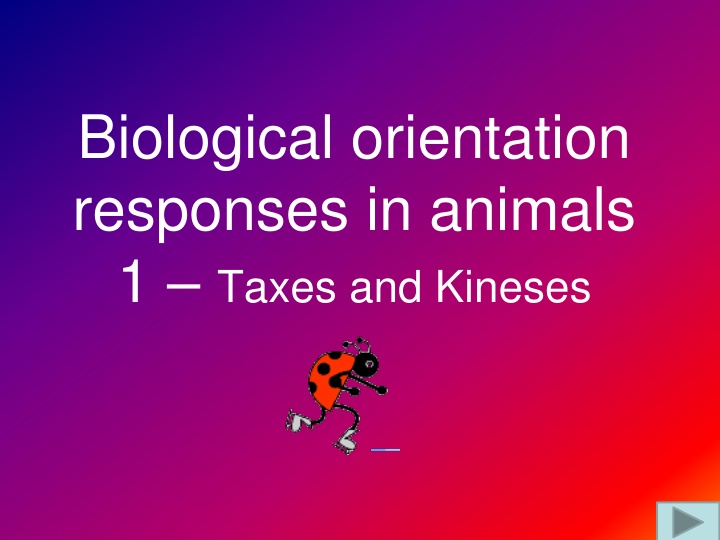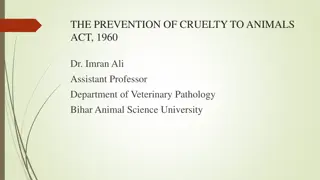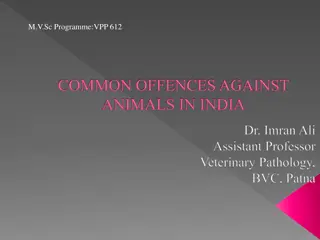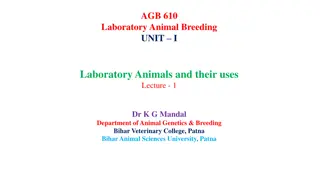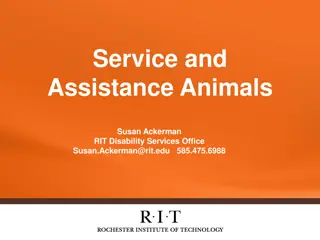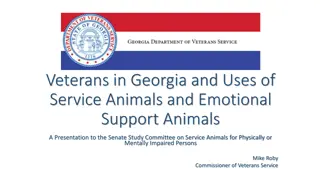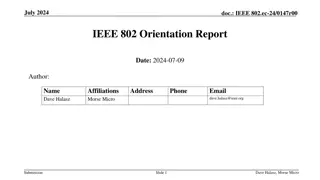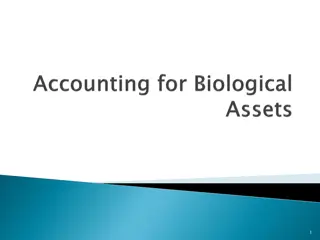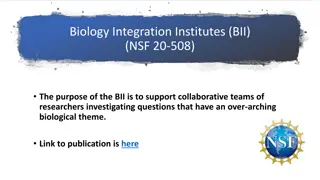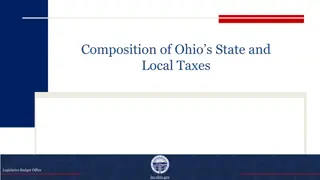Biological Orientation Responses in Animals - Taxes and Kineses
This content illustrates different biological orientation responses in animals, including taxes and kineses. It covers various stimuli such as light, gravity, chemicals, and touch, influencing animal behaviors like positive chemotaxis, phototaxis, tropotaxis, and telotaxis. The information includes examples like freshwater flatworms and moths exhibiting specific orientations in response to stimuli.
Download Presentation

Please find below an Image/Link to download the presentation.
The content on the website is provided AS IS for your information and personal use only. It may not be sold, licensed, or shared on other websites without obtaining consent from the author.If you encounter any issues during the download, it is possible that the publisher has removed the file from their server.
You are allowed to download the files provided on this website for personal or commercial use, subject to the condition that they are used lawfully. All files are the property of their respective owners.
The content on the website is provided AS IS for your information and personal use only. It may not be sold, licensed, or shared on other websites without obtaining consent from the author.
E N D
Presentation Transcript
Biological orientation responses in animals 1 Taxes and Kineses
Orientation = behaviour that positions an animal in a certain direction
Useful Prefixes for Abiotic factors Photo- Light (intensity, direction, duration) Geo- Gravity (up and down) Thermo- Temperature (range, average) Hydro- Water (humidity, soil moisture) Rheo- Current (running water direction) Chemo- Chemicals (salt, pH, toxins, ions) Thigmo- Touch
Taxes (singular taxis) The movement of the whole animal either toward (positive), away from (negative) or at a fixed angle in relation to a stimulus. Prefixes such as photo, geo etc. are used Not this sort of taxes
Freshwater flatworms show positive chemotaxis when they move toward a piece of liver. WARNING parts of this animation may not be exactly realistic, but No flatworms were harmed during its production
Moths show positive phototaxis in that they will fly toward a light. The Wedge
If an animal uses two receptors that each judge the distance of a stimulus to pinpoint the source of the stimulus it is called a tropotaxis. Male moths show positive chemo-tropotaxis when they zero in on a female moth producing a pheromone. Female Pheromones Male
Telotaxis is where an animal (e.g.moth) can use one sense organ to orient itself in relation to a stimulus. E.g a moth can fly at a fixed angle to a light even with one eye covered (e.g.photo-telotaxis)
Stimulation of these ommatidia causes turning to the left Stimulation of these causes no turning Photo-telotaxis How a honey bee can walk up a beam of light with one eye covered Stimulation of these causes turning right Stimulation of these causes rapid turning right Stimulation of these causes violent turning right
Klinotaxis When a blowfly maggot is ready to pupate it moves away from light to find a dark spot to hide. (see next slide) mum maggot
Klinotaxis is where an animal uses its one receptor to test the environment in order to orient itself. A maggot shows negative photo-klinotaxis when it keeps turning its head from side to side to move away from directional light.
Rheotaxis Trout will line themselves in an upstream direction.
Kineses A non-directional response to a stimulus A change in activity resulting from the change in intensity of the stimulus Orthokinesis = change in speed Klinokinesis = change in rate of turning
Orthokinesis in Slaters Slows in comfortable conditions
Klinokinesis Turns more in comfortable conditions Te Mutu Te Mutu
